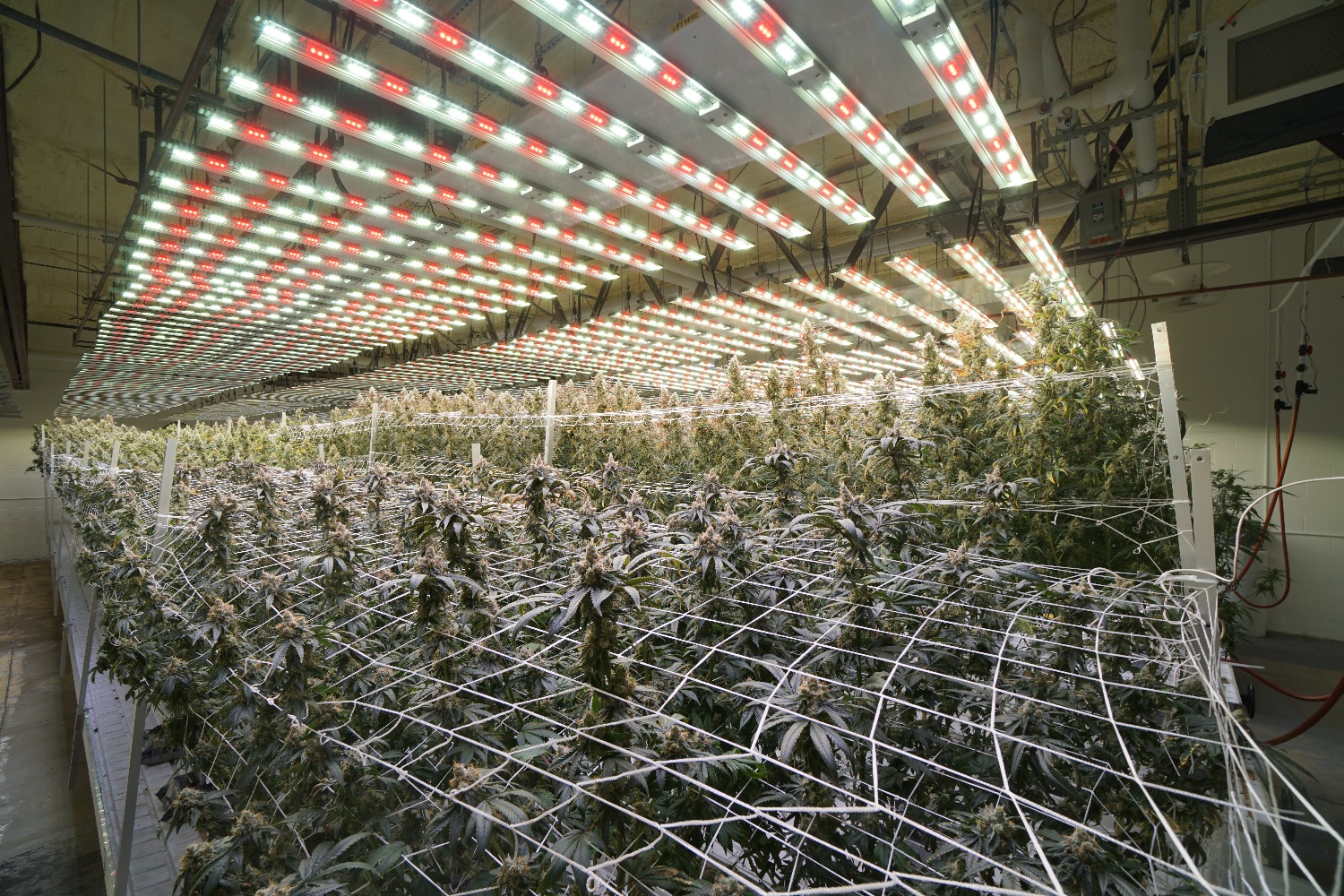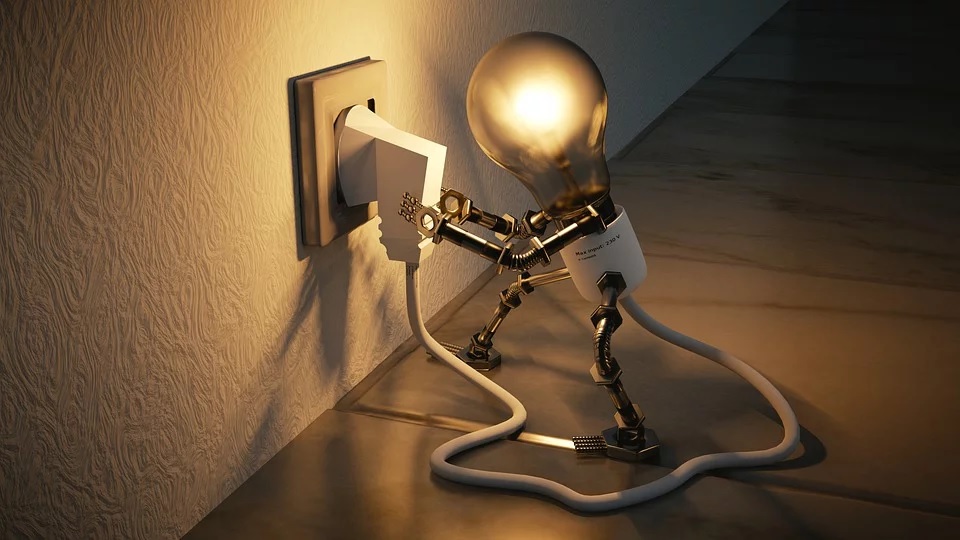In this contributor article, Brandy Keen of Surna discusses how a facility's lights and HVAC work together to maintain a controlled environment.

The following is an article produced by a contributing author. Growers Network does not endorse nor evaluate the claims of our contributors, nor do they influence our editorial process. We thank our contributors for their time and effort so we can continue our exclusive Growers Spotlight service.
Cultivation lighting is one of the biggest challenges a cultivator needs to overcome with regard to climate control in a grow operation. Lights alone consume a lot of energy, and with that comes heat. To mitigate the heat for proper climate control in the facility, even more energy is required. While this is fairly common knowledge in the industry, many cultivators aren’t aware that cultivation lighting can help maintain proper environmental conditions in a grow room in addition to saving cultivators money and energy by aiding in maintaining proper humidity.
An explanation of how this works is coming, but first, here’s a little background info to create a full picture.

The Science
In a cultivation environment, management of humidity is a bigger challenge than managing temperature. While cultivation lighting produces 3.41 BTU/kW of sensible heat for every hour that it’s in use (regardless of the type of light), cultivators also understand that their plants transpire nearly every bit of water they consume back into the environment. This requires substantial amounts of energy dedicated to the removal of that water from the air to maintain correct relative humidity. While maintaining both temperature and humidity are critical to a consistent, quality crop, poorly maintained humidity is the bigger risk of the two for failed testing, diminished harvests, and even total crop loss—this means managing humidity is absolutely critical for any successful grower.
Designers of HVAC systems for cultivation must consider both latent and sensible heat in their load calculations. Sensible heat is the amount of heat produced in the space that contributes directly to an increase in room temperature. Sources of sensible heat are primarily cultivation lighting, but include solar gains/envelope loads, fans, pumps, nutrient chillers, and other electrical equipment in use in the cultivation space. Latent heat is the amount of heat absorbed by the climate control system during the process of dehumidification. When the air in the cultivation space passes over the cooling coil of the HVAC system (or dehumidifier), sensible heat is removed. If enough sensible heat is removed to reduce the air temperature to below the dewpoint temperature, moisture condenses from a gas to a liquid state, collects on the cooling or dehumidifier evaporator coil, and drains out of the room. Just as the evaporation of water absorbs BTU’s (and creates a cooling effect), condensation of water releases BTU’s, and creates a heating effect. That heat is absorbed by the cooling medium in a climate control system but does not translate to cooling of the space—instead, that energy is used for dehumidification. This means that in most instances facilities get some indirect dehumidification as a byproduct of sensible cooling, because when cooling a cultivation space, growers are dropping the air temperature over the coils to below the dewpoint temperature. It also means that they get sensible cooling as a byproduct of dehumidification, because they have to reduce the air temperature to wring out the moisture.

Light and Dehumidification
So, where do lights come in? First and foremost, when the lighting is enabled, the climate control system is in operation to maintain temperature setpoints—so, it’s going to be dehumidifying as a byproduct when it’s cooling in typical garden parameters (if a grower deviates from the industry standards and looks for exceptionally cold or dry parameters, this may not be the case—but that’s a different discussion for another time). Climate control systems have a specific maximum sensible capacity and a specific maximum latent capacity at any given cultivation set points. If the system is running for the purposes of sensible cooling, it’s also dehumidifying. So, while the heat from the lights promotes plant transpiration and creates a humidity load in the room, the heat they produce also helps to remove that same humidity.
Wattage and What it Means for Mechanical Systems
When lower wattage lights are in use, most cultivators look to raise ambient temperatures to maintain the same vapor pressure deficit (VPD) that they would have had with higher wattage lights. In those cases, water consumption per kW of light will typically increase. For instance, a cultivator who previously grew under a 1000 watt HID light at 76-78 degrees F and irrigated 1 gallon per day per mature plant, might switch to a 650 watt LED and bump up his or her target temperatures to 82-84 degrees F to maintain VPD in the absence of the more intense radiant heat produced by the higher wattage lamp. In that case, the cultivator will likely be irrigating close to the same volume as they were under the higher wattage DE bulb, but with less heat produced by the bulb. In these instances, well-engineered HVAC systems need to be able to dehumidify the air without necessarily reducing the room temperature overall via net sensible cooling, in order to maintain these humidity setpoints. Popular methods for humidity reduction without cooling include items such as standalone dehumidifiers (electric or desiccant) or reheat via “free” energy from the refrigeration circuit in order to reheat the air after cooling below dry bulb to dehumidify. The reheat can come in the form of direct refrigeration reheat in a packaged unit or hot water reheat via a secondary heat exchanger in the case of a chiller or co-gen process.
Other Considerations
Changing system parameters also impacts the performance of the climate control system— no matter what type of HVAC system is in place. The warmer and more humid the space, and therefore entering air to the unit, the greater the capacity of the air handler or fan coil will be to absorb sensible heat and likely increase its dehumidification capacity as well. Surna has always advocated for energy efficiency in cultivation facilities, and certainly isn’t advocating for higher wattage lights—the point here that there is far more to consider than just a reduction in light wattage when considering facility design and overall energy efficiency.

Modulating hot gas reheat systems and 4-pipe chilled water systems both have an integrated dehumidification option. These systems don’t just dehumidify as a byproduct of cooling; they also have the ability to run in dehumidification mode, to a specific humidity set point. In both types of systems, the cooling coil is enabled when temperature is satisfied but dehumidification is needed, and a reheat coil is enabled to reheat the leaving air temperature to match the entering air temperature. This allows the cooling system to operate as a dehumidifier without subcooling the space (which is possible at any time during the day, but of particular concern during the night cycle when there is no offsetting heat load from the lights). In both types of systems, the reheat is accomplished by reinjecting the sensible heat removed from the room as a byproduct of dehumidification back into the airstream before returning the air to the cultivation space. This is recovered through a reheat coil in HGRH systems, and via water side heat recovery from the condenser in chilled water systems. From a dehumidification standpoint, all climate control systems benefit from the heat produced by lighting during the “day” cycle in cultivation environments, but HGRH and 4-pipe chilled water are best positioned to take the most advantage of it.
With 4-pipe chilled water systems, the benefits can be even further reaching, as the heat produced by cultivation lighting can also be utilized to supplement heat in lights off rooms because it is captured indirectly and pumped via the hot water loop, unlike packaged units which are not connected to each other, or common areas of the building. In later bloom, when humidity targets are generally lower and watering rates are generally higher, all or most of the sensible heat produced by lighting is usually needed in the space for the purposes of dehumidification. But in veg rooms and the first several weeks of flower, there is excess sensible heat that can be recovered from the condenser side of the chiller that isn’t needed for dehumidification in the room from which it’s recovered. It’s important to note that all heat recovery is done through the water or refrigerant in these systems, and not by mixing of air in any space—all cultivation spaces are isolated from each other and common areas at all times. The nature of chilled water systems allows for cooling and heating energy to be distributed anywhere in the building. So, when excess sensible heat is available, it can be routed anywhere in the building (or campus)—including common areas, and for reheat in lights-off rooms when the facility is operated on a flip. This is another area where the excess heat produced by the lights can actually help growers—not just with maintaining humidity in their cultivation spaces, but possibly even helping to reduce ambient heating needs in the rest of the building.
It’s All About Design
When a grower is cultivating in a controlled environment, what they’re really creating is an ecosystem, and there are interlocking relationships between every design decision a grower makes. There are likely to be impacts that they haven’t even considered as they weigh options—and as with anything, the answers aren’t black and white. That’s why Surna is always available to help.
Growers Network would like to thank Brandy Keen and Surna for contributing this valuable info to the blog. What do you think growers? How do you manage the climate in your grow? Head on over to forum and tell us! No a member? Just click one of the "Join Now" buttons on the page. Hope to see there!
10 Best Gift Ideas for Cannabis Connoisseurs and Growing Aficionados (2022)
December 7, 2022Developing and Optimizing a Cannabis Cultivation System
December 14, 2021Dealing with Insomnia: How Can CBD Help?
December 10, 2020Your Guide to Sleep and CBD
December 7, 2020
Do you want to receive the next Grower's Spotlight as soon as it's available? Sign up below!

Do you have any questions or comments?

About the Author
Brandy Keen, Surna co-founder and senior technical advisor, has been designing and consulting for environmental systems in indoor agricultural facilities for over twelve years. She guides licensed PE’s in facility mechanical designs, designs systems that meet local regulations and reduces energy consumption, and improve on standard practices.